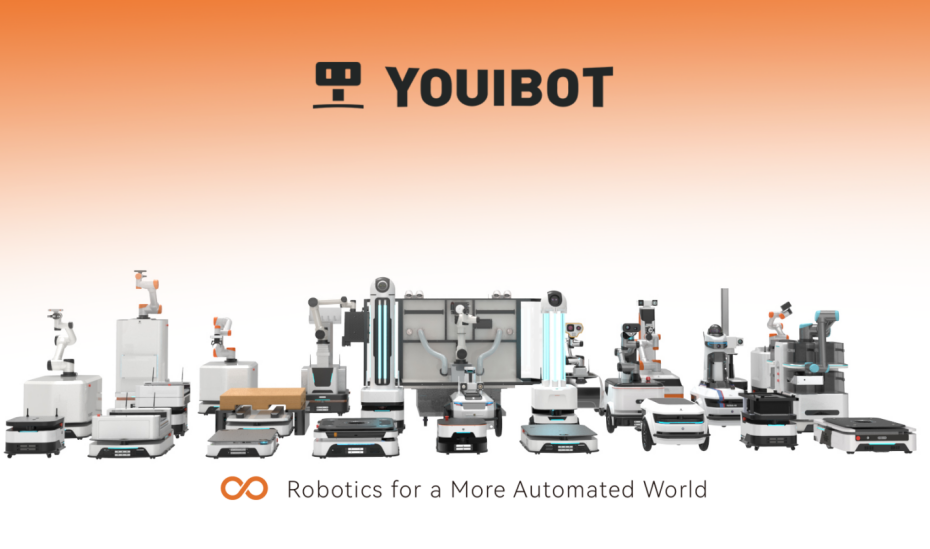© © 2025 Copyright © Youibot Robotics Co., Ltd. All rights reserved.SitemapPrivacy Policy
Although there are some similarities between an automated guided vehicle and an autonomous mobile robot, this article shows the differences between AGVs and AMRs.
AGVs and AMRs have specific characteristics that make them useful for different applications. There are certain areas where the terms AMR and traditional AGV are used interchangeably. An AGV is not a robot, but a robotic device. It lacks the autonomy to determine or redefine its route. By contrast, an AMR can navigate without external guidance. In other words, the AMR has freedom of navigation and decision-making.
An AMR is an Autonomous Mobile Robot with Natural Navigation that can redefine routes or paths and avoid obstacles. AMRs don't require predefined fixed paths. It can define its route on-the-fly. If an obstacle is detected, the AMR will adjust its path to navigate around the object.
An AGV navigates automatically along given tracks (physical or virtual, magnetic tape, reflectors triangulation, etc). The given and fixed paths cannot be abandoned by AGVs. In the case that the AGV safety sensors detect an obstacle, the AGV will stop moving and wait until the obstacle is removed.
If we look at the characteristics of AMRs, it’s easy to see how they offer advantages over AGVs:
Traditional AGVs typically use specialty signifiers like tracks, wires, tape, and reflectors to navigate which are fixed references, and are supposed to be installed in advance. Meanwhile, they must be changed whenever a route or delivery scenario changes. However, AMRs use dynamic digital maps and utilize onboard cameras and these AMR features allow the robots to be configured and mapped quickly under the control of the laser navigation systems. The return on investment (ROI) is typically in a few months when using AMRs. It also allows the robot to be reprogrammed with ease and simply route change the route on the digital map.
Nearly all AGV systems are designed to work without obstructions and away from people. AGVs are undoubtedly safe in that they will stop when an obstacle is detected but they will keep still until that obstacle is removed which is the opposite of AMRs——They were designed from the start to be collaborative. AMRs can be delivered directly to the point of use-wherever that might be. They can travel the same hallways with pedestrian foot traffic. If an obstacle is detected and there is sufficient room for the robot to travel around it, AMR will do so and keep the delivery humming along. Some AGV vendors have claimed their systems are more efficient. If there’s any truth to that it’s mainly due to the required environment. It is obvious that any AMR will work more efficiently if such obstacles are not in its path. If AMRs had the luxury of working in a controlled environment like an AGV system the results would be even better. You would have all the advantages of the lower upfront costs and changeability, along with the unfettered efficiency of an AGV.
When AGVs deliver materials from their depots to their drop-off points, their routes are typically concrete. This strict guidance system and route definition constrain the manufacturer into that specific path and those fixed drop-off or pickup points. AMRs are far more flexible since they use mapping software where myriad routes can be established and a fleet management system determines the ideal route for a delivery or pickup.
Most AGVs function independently and must be manually programmed to avoid each other and also do so by the infrastructure required (tracks). However, a fleet of AMRs employed at a single facility can communicate with each other to maximize traffic flow, avoid collisions and jams, and increase operational efficiency. AMRs also should be connected to production systems like PLCs. Integration to the PLC system ensures a smooth flow between automation celasls which efficiently pairs the production process with the AMRs. It is a real-world internet of things (IoT) solution to a plant’s automation.
With their innovative uses in the fields of industrial logistics and intelligent inspection, our autonomous mobile robots have continued to advance in technological sophistication.
Kindly click here to describe your requirements for robotics technology in greater detail so that we can customize the perfect Youibot robots for your application.

By continuing to use the site you agree to our privacy policy Terms and Conditions.